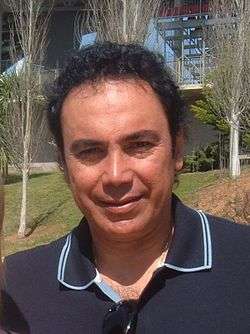Sport in Mexico
| Part of a series on the |
| Culture of Mexico |
|---|
 |
| History |
| People |
| Languages |
| Traditions |
|
Mythology and folklore
|
| Cuisine |
| Religion |
| Art |
| Literature |
|
Music and performing arts |
|
Media
|
|
Monuments |
|

The most popular sport in Mexico is association football, followed by boxing.[1][2][3] Charrería is Mexico's national sport, baseball the most popular sport in the northwest and southeast regions, basketball and bullfighting are also highly popular and appreciated.
Olympics

Mexico City hosted the 1968 Summer Olympics – the first time the event was held in Latin America. Since then the continental region hasn't held another edition of the Olympic Games until 2016, set to be held in Rio de Janeiro, Brazil.
Mexico first participated at the Olympic Games in 1900 and has sent athletes to compete in every Summer Olympic Games since 1924. Mexico has also participated in several Winter Olympic Games since 1928. Mexico has performed best in athletics, boxing, equestrian, diving, and Swimming events, and more recently taekwondo and football.
At the 2012 Summer Olympics, Mexico finished in thirty-ninth place; the Mexico team brought home seven medals, including their first gold medal won in football, and the rest of the medals in archery, diving, and taekwondo.
Pan American Games

The Pan American Games competition is held among athletes from nations of the Americas, every four years in the year before the Summer Olympic Games. Mexico Ranks 6th in the top ten nations all time at the Pan American Games (minus medals won at the Winter Pan American Games). Mexico and Canada have hosted three Pan American Games each, more than any other nation. Among cities, only Winnipeg and Mexico City have played host to the Pan American Games more than once, each holding that honor twice.
Similar to the Olympic flame, the Pan American Games flame is lit well before the Games are to commence. The flame was lit for the first games in Olympia, Greece. For subsequent games, the torch has been lit by Aztec people in ancient temples, first in the Cerro de la Estrella and later in the Pyramid of the Sun at the Teotihuacan Pyramids. The only exception was for the São Paulo games in 1963, when the torch was lit in Brasília by the indigenous Guaraní people. An Aztec then lights the torch of the first relay bearer, thus initiating the Pan American Games torch relay that will carry the flame to the host city's main stadium, where it plays an important role in the opening ceremony.
Traditional sports
Charrería

Charreada is the national sport of Mexico, it dates back to the 16th century and consists of a series of Mexico-developed equestrian events. The most notable event is the charreada; a style of rodeo developed in Mexico in the interest of maintaining the traditions of the charro. A charro is a term referring to a traditional horseman or a cowboy of Mexico, originating in the state of Jalisco.
The Federación Mexicana de Charrería (Mexican Federation of Charreria) organizes charrería events. The most popular sport is football.
Bullfighting
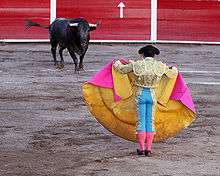
The Spanish colonization of Mexico introduced bullfighting into the country. The sport has been one of the most popular in the country for the last 400 years. One of the most prominent bullfighters of the 20th century in Mexico was Carlos Arruza. He was known as "El Ciclón" ("The Cyclone").
Typically, a bullfight in Mexico includes a variety of rodeo events known as charreadas, and traditional folklorico dances. Thousands of bullfighting events occur in Mexico. In certain areas of the country, bullfighting generates a large amount of revenue from the local population, as well as visiting tourists. As evidence of the popularity of the sport, the largest bullring in the world is the Plaza Mexico, located in Mexico City. The anniversary of the opening of Plaza Mexico is celebrated annually with a special bullfight called the "Corrida de Aniversario".[4][5][6][7] The Plaza México has been host to many of the world's best and most famous bullfighters.
Basque Pelota
Basque Pelota is a name for a variety of court sports played with a ball using one's hand, a racket, a wooden bat, or a basket propulsor, against a wall. Since 1952, "The International Federation of Basque Pelota" has organized the World Championships of Basque Pelota every four years. Mexico hosted the world championships in 1982, 1998 and 2006. Mexico gave its best performance at the 2006 games when they led all nations with 6 gold medals.
Frontenis is a variation of the Basque pelota game, itself a derivation of real tennis. It was created in the year of 1916 in Mexico, when the idea of merging tennis and the traditional Basque pilota emerged. It is played in one of the largest courts in racquet sports with a tennis racquet that contains an optional custom double string called "doble encordado" and a tiny frontenis ball.
Mesoamerican ballgame
.jpg)
The Pre-Columbian people of Mesoamerica have played the Mesoamerican ball game for over 3,000 years. Archaeologists found the oldest ballcourt yet discovered – dated to approximately 1400 BC – at Paso de la Amada in Mexico.[8]
The exact rules of the traditional ballgame remain unknown. Researchers believe that the sport probably resembled racquetball or volleyball, where the object is to keep the ball in play.[9]

In their Post-Classical Era (1000–1697 CE), the Maya began placing vertical stone rings on each side of the court, with the object of passing the ball through one. Several of these were placed quite high, as at Chichen Itza, where they stand 6 meters from the ground. Players would strike the ball with their hips or forearms, or employed rackets, bats, or hand-stones.[10]
The ball was made of solid rubber and weighed up to 4 kg or more, with sizes that differed greatly over time or according to the version played. Games took place between two individuals and between two teams of players. The ballgame played out within a large masonry structure which contained a long narrow playing alley flanked by walls with both horizontal and sloping (or, more rarely, vertical) surfaces. The walls were often plastered and brightly painted.[10] A version of the game called Ulama is still played in the Mexican state of Sinaloa.
Team sports
Association football
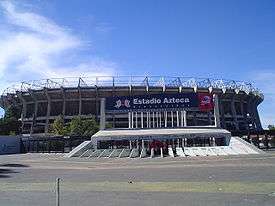
Mexico's most popular sport is association football. Football is widely followed and practiced all over the country and it is considered the most popular sport in most states. It is believed that football was introduced in Mexico by English miners at the end of the 19th century. By 1902 a five-team league emerged with a strong English influence. Football became a professional sport in 1943.
Mexico has hosted two World Cup tournaments (1970 and 1986). Many of the stadiums in use in the league have a World Cup history. Sites such as Estadio Jalisco in Guadalajara, and Estadio Azteca in Mexico City are renowned for their national and international history. The legendary Estadio Azteca, for example, is one of the only two stadiums in the world to have hosted two men's World Cup finals (the other being the Maracana) and is one of the highest capacity stadiums in the world. Mexican's biggest stadiums are Estadio Azteca, Estadio Olímpico Universitario, Estadio Jalisco and Estadio BBVA Bancomer.
National team

The Mexico national football team (Spanish: Selección de fútbol de México) represents Mexico in association football and is governed by the Mexican Football Federation (FMF, from the native name of Federación Mexicana de Fútbol Asociación), the governing body for football in Mexico. Mexico's home stadium is the Estadio Azteca and their head coach is Juan Carlos Osorio. The team is currently ranked 13th in the World Football Elo Ratings.
Mexico has qualified for fifteen FIFA World Cups and has qualified consecutively since 1994, making it one of six countries to do so. The Mexico national team, along with Brazil and Germany, are the only nations to make it out of the group stage over the last six World Cups. Mexico played France in the very first match of the first World Cup on July 13, 1930. Mexico's best progression was reaching the quarter-finals in the 1970 and 1986 World Cups, both of which were staged on Mexican soil.
The Mexico national football team won its first FIFA Confederations Cup in 1999, finished twice as runners-up at the Copa América, won the 2005 FIFA U-17 World Championship, and have reached the quarter finals twice at the World Cup. Recently, some players from Mexico have moved on to European clubs, including Rafael Márquez, Carlos Salcido, Ricardo Osorio, Pável Pardo, Andrés Guardado, Guillermo Franco, Carlos Vela, Giovani dos Santos, Omar Bravo, Aaron Galindo, Héctor Moreno, Francisco Javier Rodríguez and others.
Mexico is historically the most successful national team in the CONCACAF region, holding nine CONCACAF championships, including six CONCACAF Gold Cups, one North American Nations Cup and three NAFC Championships. Mexico is the only team from CONCACAF to have won an official FIFA competition, the 1999 FIFA Confederations Cup. Although Mexico is under the jurisdiction of CONCACAF, the national football team has been regularly invited to compete in the Copa América since 1993 finishing as runner-up twice and obtaining the third place medal on three occasions.
Professional leagues

The first Mexican club, C.F. Pachuca, survives. Since 1996, the country has played two split seasons instead of a traditional long season. There are two separate playoff and league divisions. This system is common throughout Latin America. After many years of calling the regular seasons as "Verano" (Summer) and "Invierno" (Winter); the top-level Liga MX, formerly the Primera División, has changed the names of the competition, and has opted for a traditional name of "Apertura" (opening) and "Clausura" (closing) events. The Apertura division begins in the middle of Mexico's summer and ends before the official start of winter. The Clausura division begins during the New Year, and concludes in the spring season.

Mexican football is divided into four divisions, beginning with Liga MX and followed by Ascenso MX, the Segunda División, and Tercera División. The bottom two leagues translate literally as "Second Division" and "Third Division"; their names reflect their former positions in the league hierarchy before the Segunda División was split into two leagues, with the league now known as Ascenso MX becoming the new second level.
The teams are promoted and relegated by the FMF based on percentage calculations. Relegation is a common practice in Mexican football. There is a club exchange of each tier with the adjacent tiers so that a division's least successful team is relegated (transferred) to the next lower tier and the most successful club of the lower tier is promoted to the tier above. By the placement of each, the top tier cannot promote and the bottom tier cannot relegate.
The relegation system does not punish clubs for producing a single poor season. Mexican clubs are assessed on their previous five campaigns. Points are accumulated for five seasons, and are divided by the number of matches played. The club with the lowest percentage in the Apertura is relegated to a lower division. Each team must earn their promotions.
Since 1943, Mexico's five most successful clubs in Mexican football league system matches have been América (12 championships), Chivas (11), Toluca (10), Cruz Azul (8) and Pumas (7).[11] Chivas are renowned for using only Mexican players in their squad. Consequently, they have long fed players to the Mexico national football team.
Players
Antonio Carbajal was the first player to appear in five World Cups, and Hugo Sánchez was named best CONCACAF player of the 20th century by IFFHS. Cuauhtémoc Blanco is the only Mexican football player to be presented with an award (Silver Ball and the Silver Shoe) in a major international FIFA competition (1999 FIFA Confederations Cup). He has been awarded the MVP of the México Primera División League five times. Claudio Suárez is the most capped player in the history of Mexico national team with 178 caps. Jared Borgetti is the México national team top scorer with 46 goals. As of 2006, it was estimated that Mexico has over 324,000 registered players and 8,155,000 unregistered players.
Variants of association football
Beach football is a variant of the sport of association football which was invented in Brazil. It is played on beaches, and emphasizes skill, agility and goal scoring. The FIFA Beach Football World Cup has been held annually since 2005. Mexico finished as runners up to Brazil in its first appearance at the 2007 Beach Football World Cup.
Recently indoor association football has become a popular sport in Mexico, being included as part of the Universiada (University National Games) and the "CONADEIP" (Private School Tournament), which match University school teams from all over Mexico. In Mexico, "indoor" football fields are commonly built outdoors, and the sport is known as "fútbol rápido" (fast football).
The Mexican team Monterrey La Raza joined the Major Indoor football League in 2007 and finished the season in second place during its inaugural year. A previous version of Monterrey La Raza (1992–2001) won three championships in the now defunct organizations Continental Indoor Football League and World Indoor Football League.
Baseball

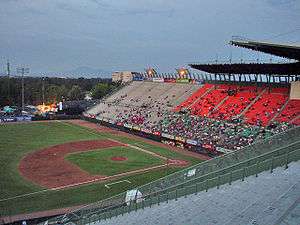
Baseball has been traditionally known as the most popular sport in some regions of Mexico, mainly in Sonora and Sinaloa and arguably in Oaxaca, Yucatán, Campeche and Tabasco, where football is also widely followed. Other states where baseball has had some tradition include Baja California, Chihuahua, Durango, Coahuila, Veracruz, Puebla, Nuevo León and Quintana Roo, yet overshadowed by football in popularity. Nevertheless, Mexico has had relative success in the sport, probably just behind boxing and comparable to the success obtained in football.
Although there is some dispute about exactly when and where baseball started in Mexico, baseball has a long and colorful history in Mexico, particularly in the north, with historians placing its origin there as early as the 1840s. Today, baseball flourishes in Mexico, where it is played professionally in both summer and winter.
Over 100 Mexicans have played in the major leagues in the United States, including Cy Young Award winner Fernando Valenzuela, top 300 home run hitter Vinny Castilla, Gold Glove Award winner Aurelio Rodríguez, and AL batting champion Bobby Ávila. The first Mexican to play in Major League Baseball in the United States was Mel Almada, who participated with the Boston Red Sox in 1933.
The Mexican League was founded in 1925, establishing six teams, and playing all their matches in Mexico City. In the 1930s and 1940s, African-Americans from the United States – who were still barred from Major League Baseball until Jackie Robinson broke the color barrier in 1947 – played alongside Mexicans and Cubans in the Mexican League. In 1937, legendary Negro Leagues' stars Satchel Paige and "Cool Papa Bell" left the Pittsburgh Crawfords to play in Latin America. After playing a year in Santo Domingo, Dominican Republic, Paige and Bell joined the Mexican League.

In the 1940s, multi-millionaire Jorge Pasquel attempted to turn the Mexican League into a first-rate rival to the major leagues in the United States.[12] In 1946, Pasquel traveled north of the border to pursue the top players in the Negro and major leagues. Pasquel signed up close to twenty major leaguers, including such well known names as Mickey Owen and Sal Maglie, and a number of Negro league players. Ultimately, Pasquel's dream faded, as financial realities led to decreased salaries and his high-priced foreign stars returned home.
Currently, 16 teams divided into North and South Divisions play in the Mexican League in a summer season, which ends in a 7-game championship series between the winners of the two divisions. Since 1967, the league has been sanctioned as an AAA minor league, though no team has an affiliation with any team in the United States.
In the winter, eight teams play in the Mexican Pacific League ("Liga Mexicana del Pacífico" or "LMP"), whose winner advances to the Caribbean Series against other Latin American champions. Although the Mexican League has a longer history, the Mexican Pacific League is the premier baseball league in Mexico today. It is played during the Major League Baseball (MLB) off-season, so many MLB players also compete in the LMP.
The Mexican Professional Baseball Hall of Fame has inducted 167 players, consisting of 138 Mexicans, 16 Cubans, 12 from the United States, and one Puerto Rican.[13][14] Distinguished players include MLB stars Roy Campanella and Monte Irvin, who played in the Mexican League in the 1940s. Nicknamed "El Bambino Mexicano", or the Mexican Babe Ruth, Héctor Espino was inducted in the Mexican Hall of Fame in 1988, after playing with San Luis Potosí, and Tampico from 1962 to 1984. His 453 home runs remained the record until Nelson Barrera surpassed him in 2001. Espino still holds the all-time records in many offensive categories.
The Mexico national baseball team represents Mexico in international tournaments, most notably the World Baseball Classic.
Basketball

Basketball is the third most popular sport in Mexico. Mexico has a few professional basketball leagues, the top professional league is the Liga Nacional de Baloncesto Profesional where the Halcones UV Xalapa are the current champions, the best teams of the LNBP advances to the FIBA Americas League where the Soles de Mexicali are the current runners-up of the Americas. In the northwestern states is the CIBACOPA competition, with professional basketball players from Mexico and U.S. universities. This regional league have a stake in the rest months of the LNBP. In 1996 Horacio Llamas made history by becoming the first Mexican to participate in an NBA game. Since then, several Mexicans followed, including Eduardo Nájera, Earl Watson, Gustavo Ayón and Jorge Gutiérrez.
The country's national team won the 2013 Americas Championship, qualified for the 2014 Basketball World Cup and won the hosting rights for the 2015 Americas Basketball Championship.
American football
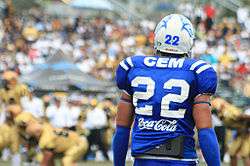
American football (gridiron) has been played in Mexico since the early 1920s, and is a strong minority sport at Mexican colleges and universities, mainly in Monterrey. American football is the fourth most popular team sport in Mexico. The maximum competition is the Liga de Fútbol Americano Profesional (LFA).[15] The Liga de Fútbol Americano Profesional was founded in 2016[16] with initial 4 teams (Raptors, Eagles, Condors and Mayas), all based in Mexico City. There are plans to expand the league and increase the number of teams and the number of participating states. On February 21 it was held the first game and the championship game was held on April 10, leaving the Mayas as champions and the Raptors as runners-up.[17]

Before this professional league was founded, the maximum competition of American football in Mexico was in college level. American football has been played in Mexico since the early 1920s in different colleges and universities, mainly in Mexico City. In 1928 the first college championship was played, organized by Jorge Braniff. Over successive decades, more universities and colleges joined the championship, and four categories, called "Fuerzas", were created. The First Fuerza became the National League in 1970. In 1978, this was reorganized under the name "Organización Nacional Estudiantil de Fútbol Americano" (ONEFA).[18]
The Aztec Bowl is a NCAA sanctioned college division post-season bowl in which American Division III college All-stars face off against a team of Mexican all-stars.
The Mexico national American football team has competed in the IFAF World Cup, which has been held every four years since 1999. Mexico participated in 1999 and 2003; finishing second in both competitions.
Raul Allegre is a former football placekicker in the National Football League (NFL) he played for the Baltimore Colts, the Indianapolis Colts, the New York Giants, and the New York Jets.
Mexico's Estadio Azteca is also notable as being the venue of the NFL-game with the all-time record attendance of 103,467 on October 2, 2005
Rugby union
Rugby in Mexico has a long tradition dating back to the early 1900s when Europeans were migrating to Mexico. Though rugby has been a minor sport in Mexico, the Mexican Rugby Federation was established, and the sport has been steadily increasing in popularity, with around twelve teams competing in the top league. The Mexican national rugby sevens team have achieved some good results in international tournaments, including taking third place at the 2015 NACRA Sevens.
Polo

Photo by David Lominska
Polo was first popularized by the Escandon-Barron family in the late nineteenth century. Three members of the Escandon-Barron family would win a bronze medal at the 1900 Olympics. The Mexican polo team also won an Olympic bronze medal in 1936, the last Olympic Games which featured polo.
Mexico hosted the World Polo Championship in 2008. The World Polo Championship has been held every three years by the Federation of International Polo since 1987. Mexico's best finishes have been second place in 1987, and third place in 1995 and 2008.
The best Mexican polo player is Carlos Gracida, who is also considered to be one of the best polo players in the sport. He has accumulated more tournament wins than any other athlete in the history of the sport, winning the Abierto Argentino de Palermo tournament five times, the British Open Gold Cup ten times, and the US Open nine times. Carlos' brother, Memo Gracida, is a polo player of international renown as well and a member of the Polo Hall of Fame. The two have teamed together to win numerous tournaments worldwide.
Racquetball
Racquetball is a popular sport that is played in Mexico. The Racquetball World Championships were first held in 1981 and have been played every two years since 1984. San Luis Potosí hosted the championships in 1994 and 2000. Álvaro Beltrán was World Champion in 2000, and Mexican men have won the doubles titles four times: in 2000 (Luis Bustillos & Javier Moreno), 2002 (Polo Gutierrez & Gilberto Mejia), 2006 (Moreno & Beltran), and in 2012 (Moreno & Beltran).[19] while the Mexican teams have finished among the top three in men's and top four in women's since 1986.[20]

Paola Longoria was the #1 player on the Women's Professional Racquetball Organization tour at the end of its 2008–2009 season, becoming the first woman not from Canada or the USA to do so. She also won gold at the 2009 and 2013 World Games, and again is the first non-American woman to do so. Additionally, in 2012, she became the first player to win both the singles and doubles Racquetball World Championship.
Racquetball will be included in the 2011 Pan American Games in Guadalajara.
Ice hockey
Although not a mainstream sport in Mexico, ice hockey is played in larger cities like Monterrey, Guadalajara, Villahermosa, Culiacán, León and Mexico City.
The Mexican Elite League is the top level of ice hockey in Mexico. The Mexican Elite League, was inaugurated on 2 October 2010 with the aim to establish Mexico as a high-level international competitor in ice hockey. Currently it has 4 professional teams and 17 associated equipment.
The "Federación Deportiva de Mexico de Hockey Sobre Hielo" (Mexico National Ice Hockey Federation) regulates all tournaments in Mexico. The Mexican hockey league includes 7 federation clubs and 8 independent clubs.[21] Mexico is also the only Latin American full member of the International Ice Hockey Federation and competes in international tournaments.[22]
Individual sports
Boxing
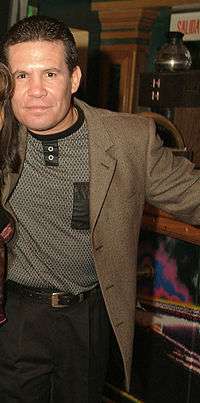
Mexican sport is also known for its boxing tradition. Boxing is the most popular individual sport in Mexico. Mexico is also the second in total number of world champions produced, after the United States,[25] and has recently produced more World Champions in the last 30 years.[26] The first boxing champion Mexico produced was Battling Shaw when he became the Light Welterweight Champion by outpointing Johnny Jadick in 1933.
International Boxing Hall of Fame members include, Julio César Chávez, Sr., Salvador Sánchez, Ricardo Lopez, José Nápoles, Rubén Olivares, Baby Arizmendi, Pipino Cuevas, Chiquita González, Sugar Ramos, Daniel Zaragoza, Miguel Canto, Vicente Saldivar, Carlos Palomino, and Carlos Zárate. Other prominent Mexican boxers include World Boxing Hall of Fame members, Kid Azteca, Jesús Pimentel, Lupe Pintor, Juan Zurita, and José Luis Ramírez. More recent champions include Canelo Álvarez, Julio César Chávez Jr., Marco Antonio Barrera, Érik Morales, Juan Manuel Márquez, Rafael Márquez, Israel Vázquez and Juan Francisco Estrada.
Mexico's biggest rival in the sport of boxing is Puerto Rico. There have been many classic match ups between the two such as Sánchez–Gómez Gómez–Zárate and many more. Other great match ups are between two Mexican fighters and Mexican vs. Mexican-American. Good examples of fighting between two Mexicans are Barrera vs Morales and Márquez vs Vázquez. A good example of a Mexican vs a Mexican-American are Bazooka Limon vs Chacon, Chiquita González vs Carbajal, Márquez vs Díaz, and Castillo vs Corrales.
Tennis
The Abierto Mexicano Telcel is a tennis tournament held in Acapulco, Mexico. It is an event on both the ATP Tour (International Series Gold event) and the WTA Tour (Tier III).
Rafael Osuna is the best tennis player to come out of Mexico. He was ranked number one in 1963 when he won the U.S. Open Championship. Osuna led Mexico to the 1962 Davis Cup, becoming the first team from Latin America to compete for the trophy. Osuna would go on to win a Grandslam singles championship in 1963. He also won the U.S. Open Doubles Championship in 1962, the Wimbledon double's championship in 1960 and 1963, and a doubles tennis Olympic gold medal in 1968. Osuna was killed in a plane crash in 1969 at the age of 30. In 1969, the Intercollegiate Tennis College Association NCAA instituted "The Rafael Osuna Sportsmanship Award" in his honor. Later that year, the Chapultepec Club, renamed its stadium "Rafael Osuna Stadium". He was inducted into the International Tennis Hall of Fame in 1979.
Auto racing
The most notable Mexican professional auto racers have been Pedro Rodríguez, who was the winner of the 1968 24 Hours of Le Mans, and his brother Ricardo Rodríguez, who at age 18 finished second at the 1960 24 Hours of Le Mans, becoming the youngest ever to stand on the podium. He was also the youngest F1 driver at that time. They were both considered among the top drivers before their untimely deaths.
The Mexico City racetrack Autódromo Hermanos Rodríguez ("Rodríguez Brothers Racetrack") was named in their honor. Autódromo Hermanos Rodríguez has hosted several racing events including the Formula 1 (1962–1970 and 1986–1992), Champ Car World Series (1980–1981 and 2002–2007), World Sportscar Championship, Grand-Am, Trans-Am, IMSA, A1 Grand Prix, NASCAR Nationwide Series, Formula BMW World Finals, Champ Car Atlantic Series, Panam GP Series and NASCAR Mexico Corona Series.
More recently Sergio Pérez and Esteban Gutiérrez have re-established a Mexican presence in F1. Behind the scenes, Jo Ramírez worked for a number of F1 teams, most notably as team co-ordinator for McLaren in the 1980s and 1990s.
The A1 Team Mexico is the Mexican team of A1 Grand Prix, the World Cup of Motorsport; Salvador Durán has earned two victories for the team.
Adrián Fernández has become a popular driver in Mexico since the 1990s and reached his climax when he finished in second place during the 2000 CART season. Fernández co-founded the Fernández Racing with which he championed the American Le Mans Series and previously won in Champ Car, the IRL IndyCar Series, and Grand-Am.
Other auto racing events currently held in Mexico include the Baja 1000, the World's most important off-road race, taking place on Mexico's Baja California Peninsula and with the Mexicans normally winning various categories. Racing events formerly held in Mexico include the Tecate/Telmex Grand Prix of Monterrey and the Carrera Panamericana, which is now held as one of the premiere vintage racing events of the World. Rally Mexico is a round of the FIA World Rally Championship.
Golf
.jpg)
Golf is a popular sport in Mexico.[27] There are over 150 golf courses in the country. Lorena Ochoa, who was the number-one-ranked female golf player in the world before abruptly retiring in 2010, has helped increase the popularity of golf in the country.
Professional golf tournaments held in Mexico includes, the Corona Championship, MasterCard Classic, Lorena Ochoa Invitational, Mayakoba Golf Classic at Riviera Maya-Cancún, and the Mexican Open.
Taekwondo

Taekwondo was introduced to Mexico in 1969 by Korean Mexican Dai Won Moon.[28] With over 1.5 million taekwondo practitioners and 3,500 schools throughout the country, taekwondo is one of the most popular sports in the nation.[28] Mexico has also been competitive on the international level in the sport of taekwondo. Over forty Mexican taekwondo practitioners have medaled at the World Taekwondo Championships.[29]
Taekwondo made its official debut at the 2000 Summer Olympics and Mexican athletes have medaled in the sport in every Olympics since then. Mexican athletes won a bronze medal in taekwondo at the 2000 Summer Olympics, a silver and bronze medal at the 2004 Summer Olympics, two gold medals at the 2008 Summer Olympics, a bronze medal at the 2012 Summer Olympics and a silver medal at the 2016 Summer Olympics. María Espinoza has medaled at the 2008, 2012 and 2016 Olympics. Mexico currently ranks 4th on the total medal count for taekwondo, its best performance for any Olympic sport.
Track and field
The 400-meter event became popular when Ana Guevara became world champion in 2003.
Sports leagues in Mexico
-
 Liga MX (First Division)
Liga MX (First Division) -
 Ascenso MX (Second Division)
Ascenso MX (Second Division) -
 Segunda División de México (Third Division)
Segunda División de México (Third Division) -
 Tercera División de México (Fourth Division)
Tercera División de México (Fourth Division) -
 Super Liga Femenil de Fútbol (SuperLeague, women's association football)
Super Liga Femenil de Fútbol (SuperLeague, women's association football) -
 Liga Mexicana de Fútbol Rápido (Indoor Soccer)[30]
Liga Mexicana de Fútbol Rápido (Indoor Soccer)[30] -
 Liga Mexicana de Béisbol (Mexican Baseball League)
Liga Mexicana de Béisbol (Mexican Baseball League) -
 Liga Mexicana del Pacífico (Pacific League)
Liga Mexicana del Pacífico (Pacific League) -
 Liga Invernal Veracruzana[31] (Veracruz Winter League)
Liga Invernal Veracruzana[31] (Veracruz Winter League) -
 Liga de Béisbol del Noroeste de México[32] (Northeast Mexico Baseball League)
Liga de Béisbol del Noroeste de México[32] (Northeast Mexico Baseball League) -
 Liga Norte de México (Mexican Northern League)
Liga Norte de México (Mexican Northern League) -
 Liga Norte de Sonora (Sonora Northern League)
Liga Norte de Sonora (Sonora Northern League) -
 Liga Mayor de Béisbol de La Laguna (Major League Baseball of La Laguna)
Liga Mayor de Béisbol de La Laguna (Major League Baseball of La Laguna) -
 Liga Estatal de Béisbol de Chihuahua (State League Baseball Chihuahua)
Liga Estatal de Béisbol de Chihuahua (State League Baseball Chihuahua) -
 Liga del Norte de Coahuila (Northern League Coahuila)
Liga del Norte de Coahuila (Northern League Coahuila) -
 Liga Invernal Mexicana (Mexican Winter League)
Liga Invernal Mexicana (Mexican Winter League) -
 Liga Peninsular de Béisbol (Peninsular Baseball League)
Liga Peninsular de Béisbol (Peninsular Baseball League) -
 Liga Nacional de Baloncesto Profesional (National Professional Basketball League)
Liga Nacional de Baloncesto Profesional (National Professional Basketball League) -
 Circuito de Baloncesto de la Costa del Pacífico[33] (Pacific Coast Basketball Circuit)
Circuito de Baloncesto de la Costa del Pacífico[33] (Pacific Coast Basketball Circuit) -
 Liga Premier de Baloncesto (Premier Basketball League)
Liga Premier de Baloncesto (Premier Basketball League) -
 Liga Estatal de Básquetbol de Chihuahua (State of Chihuahua Basketball League)
Liga Estatal de Básquetbol de Chihuahua (State of Chihuahua Basketball League) -
 Liga Nacional de Baloncesto Profesional Femenil de México (Women's National Professional Basketball League)
Liga Nacional de Baloncesto Profesional Femenil de México (Women's National Professional Basketball League) -
 Liga de Fútbol Americano Profesional. (Professional Football League)[34]
Liga de Fútbol Americano Profesional. (Professional Football League)[34] -
 Organización Nacional Estudiantil de Fútbol Americano (National Student Organization of American Football)
Organización Nacional Estudiantil de Fútbol Americano (National Student Organization of American Football) -
 Comisión Nacional Deportiva Estudiantil de Instituciones Privadas de Fútbol Americano (Student Sports National Commission on Private Institutions of American Football)
Comisión Nacional Deportiva Estudiantil de Instituciones Privadas de Fútbol Americano (Student Sports National Commission on Private Institutions of American Football) -
 Liga Nacional Master (National Master League)
Liga Nacional Master (National Master League) -
 Liga OMFA Pro (OMFA Pro League)
Liga OMFA Pro (OMFA Pro League) -
 Liga AFAS Master (AFAS Master League)
Liga AFAS Master (AFAS Master League) -
 Liga Mexicana de Voleibol (Mexican Volleyball League)
Liga Mexicana de Voleibol (Mexican Volleyball League) -
 Liga Mexicana de Voleibol Femenil (Women's Mexican Volleyball League)
Liga Mexicana de Voleibol Femenil (Women's Mexican Volleyball League) -
 Liga Mexicana Élite[35] (Mexican Elite League)
Liga Mexicana Élite[35] (Mexican Elite League) -
 NASCAR Corona Series
NASCAR Corona Series -
 NASCAR Mexico
NASCAR Mexico -
 NASCAR Mexico T4 Series
NASCAR Mexico T4 Series
International sporting events hosted by Mexico


- 1968 Summer Olympics
- 1926 Central American and Caribbean Games
- 1954 Central American and Caribbean Games
- 1990 Central American and Caribbean Games
- 2014 Central American and Caribbean Games
- 1955 Pan American Games
- 1975 Pan American Games
- 2011 Pan American Games
- 1969 World Judo Championships
- 1970 FIFA World Cup
- 1986 FIFA World Cup
- 1983 FIFA World Youth Championship
- 2011 FIFA U-17 World Cup
- 1999 FIFA Confederations Cup
- 2012 FIFRA Club Championship
- 1974 FIVB Men's Volleyball World Championship
- 1974 FIVB Women's Volleyball World Championship
- 1979 Summer Universiade
- 1993 CONCACAF Gold Cup
- 2003 CONCACAF Gold Cup
- 2007–2008 FIBA Americas League
- 2008–2009 FIBA Americas League
- 2007 World Chess Championship
- 2008 World Polo Championship
- 2009 World Baseball Classic (Pool B)
- 2013 World Taekwondo Championships
- 2014 World Cup Taekwondo Team Championships
- 2015 World Cup Taekwondo Team Championships
Lucha libre (wrestling)

Mexican professional wrestling, which is known as lucha libre, has been a popular spectacle in Mexico since 1933, when promoter Salvador Lutteroth Gonzales founded Empresa Mexicana de Lucha Libre. Like other forms of professional wrestling, it is not strictly a sport, as matches usually have predetermined outcomes. Lucha libre is characterized by rapid sequences of holds and moves, as well as spectacular high-flying moves, many of which have been adopted in the United States.[36] The two most popular lucha libre promotions are Consejo Mundial de Lucha Libre (CMLL), and Asistencia Asesoría y Administración (AAA). Wrestling stars include El Santo, Blue Demon, and Mil Máscaras.
Nuestra Belleza México
Nuestra Belleza México (English: Our Beauty Mexico) is a Mexican national beauty pageant held annually since 1994. It is currently responsible for selecting the country's delegates to the largest international beauty contest, Miss Universe, as well as minor pageant as Miss International and Reina Hispanoamericana.
See also
References
- ↑ http://www.miamiherald.com/2011/07/17/2317500/boxing-a-cultural-phenomenon-in.html
- ↑ "Manny Pacquiao-Juan Manuel Márquez III sets ratings record in Mexico – News – FOX Sports on MSN". FOX Sports. Retrieved March 28, 2015.
- ↑ "A Road Trip, Mexican Style, to Watch the Cowboys." The New York Times. By JULIÁN AGUILAR Published: December 17, 2011
- ↑ Pilot Guides.com: Battle to the Death: Mexican Bullfighting
- ↑ "SHARK – Investigations and Campaigns Against Animal Abuse". Retrieved March 28, 2015.
- ↑ "Bullfighting in Mexico: The conquest of fear, Latino style". Retrieved March 28, 2015.
- ↑ JAUS. "Clickon Cuernavaca – Inicio". Retrieved March 28, 2015.
- ↑ See Hill, Blake and Clark (1998); Schuster (1998).
- ↑ Noble, p. 65.
- 1 2 Quirarte, p.209-210.
- ↑ "Mexico – List of Champions". Rec.Sports.Football Statistics Foundation.
- ↑ Nicholl, Conor (November 14, 2007). "Pasquel was a force for integration". MLB.com. Retrieved December 27, 2014.
- ↑ Salón de la Fama del Beisbol Profesional de México
- ↑ Salón de la Fama del Beisbol Profesional de México
- ↑ Mancera presenta la Liga de Futbol Americano Profesional.
- ↑ Presentan liga profesional de fútbol americano en territorio mexicano.
- ↑ Presentan trofeo del 1er Tazón México – LFA.
- ↑ "La Página Oficial de la ONEFA" (in Spanish). Organización Nacional Estudiantil de Fútbol Americano. 2008. Retrieved 2008-01-18.
- ↑
- ↑ RACQUETBALL – International Racquetball Federation – IRF
- ↑ MexicoHockey.com – Ice Hockey in Mexico – news, info, forums, teams
- ↑ "Mexico". Retrieved March 28, 2015.
- ↑ "Manny Pacquiao Vs Julio Cesar Chavez: Tackling Invincibility". Ringside Report. February 16, 2010. Retrieved 2011-01-09.
- ↑ "Boxing News – Boxing Results – Boxing Schedule – Boxing Rankings – Boxing – Pound for Pound History | Awards". Theboxinghistorian.com. January 3, 2011. Retrieved 2011-01-09.
- ↑ "Mexican Olympic Medalists". ExplorandoMexico. September 13, 2007. Retrieved 2011-04-25.
- ↑ "Mexican sport". donQuijote. Retrieved March 28, 2015.
- ↑ Noticias (Spanish)
- 1 2 "Moon Dai-won: father of Mexican taekwondo". Korea Times. Retrieved October 19, 2014.
- ↑ "World Taekwondo Championships Results – TAEKWONDO HALL OF FAME ®". Retrieved March 28, 2015.
- ↑ LMFR
- ↑ "Liga Invernal Veracruzana de Beisbol Profesional". Retrieved March 28, 2015.
- ↑ "Liga de Beisbol del Noroeste". Retrieved March 28, 2015.
- ↑ Circuito de Baloncesto de la Costa del Pacífico
- ↑ http://lfa.mx LFA
- ↑
- ↑ "CANOE – SLAM! Sports – Wrestling – Lucha Libre 101". canoe.ca. Retrieved March 28, 2015.
External links
- Complete list of Mexico sports federations
- Federación Mexicana de Raquetbol – Women's Mexican Racquetball Federation
